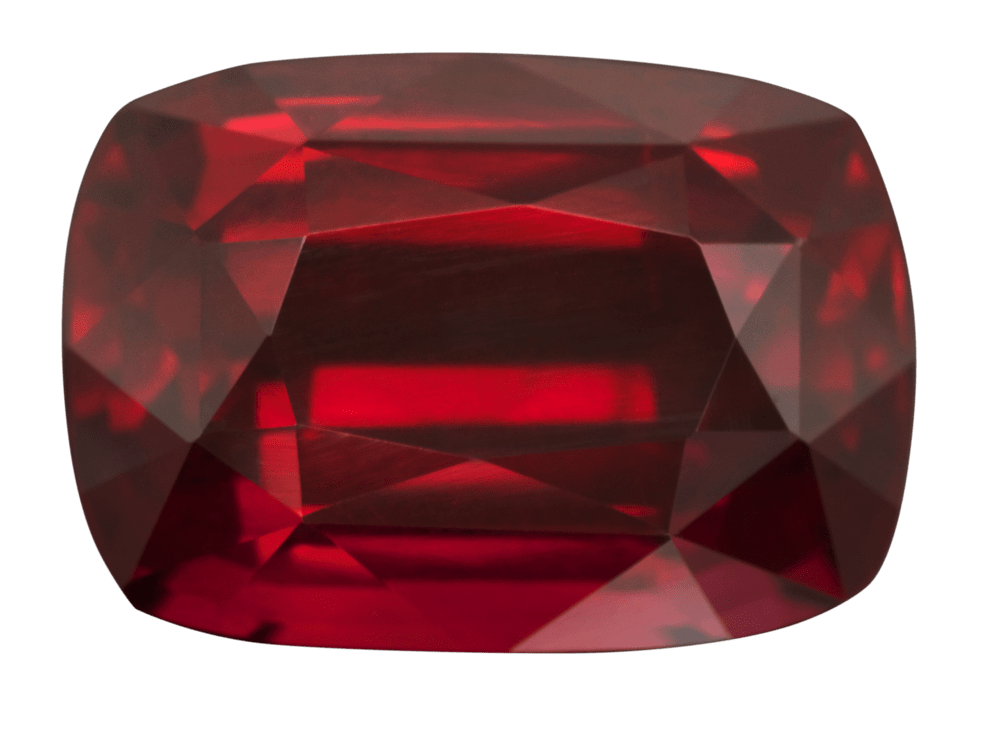
Ruby is a red gem
Contents:
- ruby properties
- Why is ruby red?
- Ruby color and price
- The occurrence of rubies - where are they most mined?
- Ruby jewelry and other uses for this stone
- Legends and healing properties of ruby
- Famous and greatest rubies
- Synthetic rubies, that is, the artificial equivalents of rubies.
- Synthetic ruby - price
- How to distinguish a synthetic ruby from a natural one?
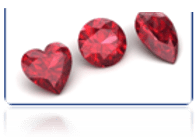
Ruby is one of the world's oldest, rarest and most respected gemstones, often referred to as the "king of gems". The name Ruby comes from the word "rubeus", which means "red" in Latin. In ancient Sanskrit, the ruby was translated as "ratnaraj", which means "king of precious stones." If we are looking for a beautiful red stone, ruby is the perfect choice. Due to its hardness, durability, brilliance and rarity, it is the most coveted gemstone not only for women but also for men.
 ruby properties
ruby properties
Ruby is the red variety of corundum. Since a ruby and a sapphire are identical in all properties except color, a ruby can be said to be a red sapphire. However, due to its special charm and historical significance, the ruby has always been classified as a gemstone in its own right. Nine on the Mohs scale means that ruby (corundum) is second only to diamond in hardness. Ruby, like sapphire, is characterized by pleochroism (the phenomenon of color change depending on the angle of incidence of light) and luminescence. Inclusions found in rubies indicate the origin of the stone. For example, Burmese rubies have a short rutile needle. Ruby crystallization proceeds in a tablet, bipyramidal or rod-like form with a hexagonal base.
Why is ruby red?
As you know, corundum is a colorless mineral. This is an additive in the form of a chromium element. makes rubies red. The more of this element, the more intense the color will be. In addition, the ruby fluorescence is also due to chromium, which makes the color stronger. A common element also found in rubies is iron. Unfortunately, the more it is, the less the glow of the stone and the darker the color. The reason for this is the presence of a number of sapphires and rubies. It is iron that "improves" the blue color of sapphires, but at the same time reduces the intensity of the ruby red color.
Ruby color and price
The most important characteristic of a ruby that affects its price is, of course, color. The color of a ruby varies from bright red to dark reddish brown. The most valuable and desirable color is a deep blood red with a slightly bluish tinge. This is called Burmese or "" (pigeon blood). Rubies must have good clarity to be worthy of a gemstone. Of course, the brilliance of the stone is also of great importance, but ruby crystals are matte before polishing. Only an appropriate cut, preferably faceted, gives rubies the correct sparkle, and only elements found in nature impart color. Prices for beautiful natural rubies reached $100 per carat. As for the price, the ruby is one of the few stones whose value can be increased by the appropriate inclusion. Small rutile roller skates can reflect light in such a way that a star effect will be visible on the stone.
The occurrence of rubies - where are they most mined?
Ruby is mainly found in Afghanistan, Cambodia, India, Kenya, Madagascar and Sri Lanka, as well as Pakistan, Tanzania and Thailand. Unfortunately, rubies over 5 carats are extremely rare, and rubies over 10 carats are very, very rare. Due to the fact that ruby and sapphire are corundum, their occurrence is also similar. They are very often found in metamorphic rocks, in layers of marble. They also appear in basalt rocks, but those derived from these rocks have more iron impurity than those from marble rocks, making them less valuable due to the "uglier" color. In many places around the world you can find rubies with different red saturations, however, it is impossible to tell by color which ruby comes from which region of the world, because in one place there can be a large section of ruby crystals. However, it is Burmese rubies that are considered the most valuable, and it is there that rubies with the color of “pigeon blood” most often appear.
Ruby jewelry and other uses for this stone
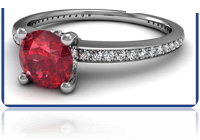
The ruby has always been a symbol of love and desire.Therefore, it is not surprising that ruby jewelry is very popular. As you know, ruby is a precious stone, so it should also be combined with a precious metal. Yellow gold, white gold, rose gold or platinum - all of these metals combine beautifully with red corundum. Unusual ruby rings or ruby earrings are a gift for any occasion, and large rubies with a small amount of inclusions can be worth millions of dollars. This beautiful red corundum is cut in the same way as a diamond, but most often the mass of the stone is the "bottom" of the stone, so a ruby of the same mass will appear smaller than a diamond. It is most often seen with a brilliant round cut. Ruby is the perfect stone for daily wear.however, some details should be kept in mind: avoid contact with chemicals and do not expose to high temperatures. Ruby rings or other ruby jewelry should be cleaned with a soft toothbrush and mild soapy water. You can also use an ultrasonic cleaner for best results. In addition to jewelry, rubies are used in watchmaking, to create watch bearings. They are also used to create elements of refractory tools, and due to the low coefficient of thermal expansion and high hardness, they are also used in mandrels of coordinate measuring machines.
Legends and healing properties of ruby
Because of the dark red color the ruby has long been associated with vitality and vitality. It is believed to enhance energy, awareness, courage, wealth, happiness in love and protection in battle. It also symbolizes prosperity. Ruby is especially valued in Asian countries. It was sold along the Northern Silk Road in China as early as 200 BC. The Chinese nobility adorned their armor with rubies, as they believed that this gem would provide protection in battle. They also buried rubies under the foundations of buildings to make themselves and their families happy. The ancient Hindus believed that they would be reborn as emperors if they offered rubies to the god Krishna. In Hindu beliefs, a fire blazing with rubies burned so intensely that it supposedly could boil water. Greek legends said that the heat of a ruby could melt wax. Burmese warriors implanted rubies into their bodies to give them protection and strength. Many cultures have also admired the ruby as a symbol of love and passion, a precious stone that awakens the senses, enhances positive energy, and guarantees health, wisdom, wealth, and success in love. Ruby is the best gift for those born in July, as well as those born under the sign of Aries, and for the celebration of the 15th and 40th wedding anniversaries. Rubies have long been considered the perfect wedding decoration, a gift that symbolizes prosperity. According to many who are interested in alternative medicine, the ruby can relieve pain in the spine, strengthen the heart, stimulate blood circulation or relieve eye fatigue.
Famous and greatest rubies
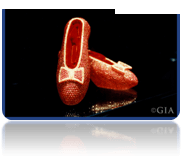 32.4 million dollars - the amount for which the ruby ring was sold. The stone weighs 25.59 carats, which is $1,266,901 per carat. The auction took place on May 12 2015 and gave us a new price record for a colored stone.
32.4 million dollars - the amount for which the ruby ring was sold. The stone weighs 25.59 carats, which is $1,266,901 per carat. The auction took place on May 12 2015 and gave us a new price record for a colored stone.
Star ruby, cabochon cut (flat bottom, convex hill) - Rosser Reeves star weighing 138,72 carats, found in Sri Lanka. Currently located at the Museum of Natural History (Smithsonian Institution) in Washington.
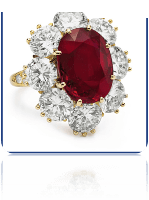
Elizabeth Taylor was once given a ruby and diamond ring. (photo right) A festive gift from Richard Burton and Harry Winston created beautiful slippers in honor of the 50th anniversary of the movie "The Wizard of Oz". (photo on the left) Of course, one cannot fail to mention Princess Mary of Denmark, who owns an amazingly beautiful tiara with rubies and a wonderful ruby necklace.
Synthetic rubies, that is, the artificial equivalents of rubies.
Synthetic ruby, which could be used in the jewelry industry, was already created at the turn of the XNUMXth and XNUMXth centuries. This was done by the French chemist Verneuil, who, however, relied on the research of his predecessors. As with the production of synthetic sapphires, there are many methods. Many companies have their own methods that they protect and do not reveal to anyone. However, the production of synthetic ruby can be divided into two types of methods. Fusion manufacturing, in which a powdered material is heated to a liquid state and then solidified into a crystalline form. The second type of method is the production of a "solution" where alumina is required, which is colorless, and chromium, which imparts color. Alumina and chromium are dissolved in another material and subjected to crystallization. The Verneuil and Chochralski methods are the most commonly used methods for producing rubies from powdered material. Both the hydrothermal growth method and the flow growth method are the most commonly used methods in the production of "solution".
 Synthetic ruby - price
Synthetic ruby - price
Verneuil's "flame melting" method produces the cheapest rubies, which are used in bearings or in very cheap jewelry. The Chochralski method, the so-called Pulled Ruby, is used for lasers, and they fetch a price of around $5 per carat. Flux Growth rubies cost as much as $50 per carat and are used in jewelry, while the hydrothermal method, less common, is used in applications in industries where degreased crystals are required.
How to distinguish a synthetic ruby from a natural one?
The easiest way, of course, is under a microscope, which will reveal to us the characteristic patterns of inclusions, bubbles and stripes. With the right tools, a good gemologist will not only be able to tell the difference between an artificial stone and a natural stone, but will also be able to tell which part of the world the stone comes from, if it is natural, or by what method it was created, if it is natural. synthetic. It is worth remembering that synthetic rubies have the same characteristics or are very similar to natural stones. Nature will never create a perfect stone, so if we are dealing with only one and the price is very attractive, be careful and consider it to be a synthetic stone.
Check out our collection of knowledge about all gems used in jewelry
- Diamond / Diamond
- Ruby
- amethyst
- Aquamarine
- Agate
- ametrine
- Sapphire
- Emerald
- Topaz
- Tsimofan
- Jade
- morganite
- howlite
- Peridot
- Alexandrite
- Heliodor
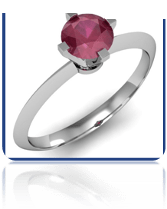 ruby properties
ruby properties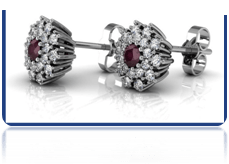
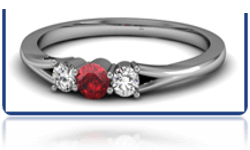
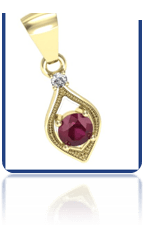
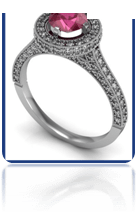
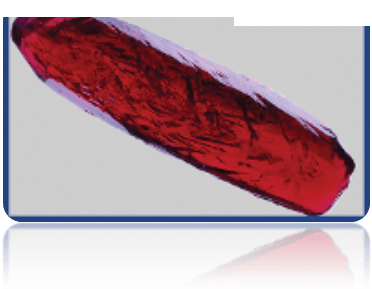 Synthetic ruby - price
Synthetic ruby - price
Leave a Reply